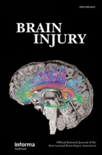
BRAIN INJURY
Scope & Guideline
Driving scholarly communication in brain injury research.
Introduction
Aims and Scopes
- Trauma and Injury Mechanisms:
Research on the mechanisms of brain injury, including traumatic brain injury (TBI) and sports-related concussions, focusing on causes, consequences, and prevention strategies. - Neurorehabilitation and Recovery:
Studies exploring various rehabilitation methods, including physical, cognitive, and psychological interventions, to enhance recovery and functional outcomes for individuals with brain injuries. - Psychosocial Impact and Quality of Life:
Investigations into the psychosocial effects of brain injuries on patients and their families, including quality of life assessments and community reintegration. - Biomarkers and Neuroimaging:
Research utilizing biomarkers and advanced neuroimaging techniques to understand brain injuries better, predict outcomes, and tailor interventions. - Innovative Treatment Approaches:
Exploration of novel therapeutic interventions, including pharmacological treatments, neurostimulation, and technology-enhanced rehabilitation. - Educational and Policy Perspectives:
Discussion of educational programs, policy implications, and best practices for managing brain injuries in various populations, including children and veterans.
Trending and Emerging
- Telehealth and Remote Rehabilitation:
With the rise of digital health solutions, there is an increasing focus on telehealth interventions for brain injury rehabilitation, particularly in the context of the COVID-19 pandemic. - Mental Health and Emotional Well-being:
Emerging research is increasingly addressing the psychological aspects of brain injuries, including the prevalence of anxiety, depression, and PTSD among survivors. - Longitudinal Studies of Recovery:
There is a trend toward longitudinal studies that track recovery trajectories over time, providing deeper insights into the long-term effects of brain injuries. - Interdisciplinary Approaches:
Collaborative research involving multiple disciplines, including psychology, medicine, and rehabilitation sciences, is gaining traction to address the complex nature of brain injuries. - Biomarkers and Genomics:
A growing interest in identifying biomarkers and genetic factors that influence recovery outcomes and susceptibility to brain injuries is emerging as a significant research avenue. - Health Disparities and Access to Care:
Research examining disparities in access to care and outcomes among different populations, particularly marginalized groups, is increasingly prevalent.
Declining or Waning
- Traditional Neuropsychological Assessments:
Research focused on conventional neuropsychological testing methods is becoming less prevalent, possibly due to a shift towards more dynamic and functional assessments that consider real-world applications. - Acute Management Protocols:
Studies specifically addressing acute management protocols for TBI are decreasing, as the field moves toward integrated, long-term rehabilitation strategies rather than isolated acute interventions. - Single-Factor Analyses:
Research that solely examines single factors affecting TBI outcomes, such as age or sex, is waning in favor of more comprehensive models that consider multiple interacting factors. - Focus on Isolated Case Studies:
The prevalence of isolated case studies is decreasing as the journal emphasizes larger cohort studies and systematic reviews that provide broader insights into TBI and its management.
Similar Journals

Turkish Neurosurgery
Pioneering Research for Tomorrow's NeurosurgeonsTurkish Neurosurgery is a distinguished journal published by the TURKISH NEUROSURGICAL SOC, dedicated to advancing the field of neurosurgery and clinical neurology. With an ISSN of 1019-5149 and converging its focus from 1990 to 2024, this regional journal aims to bridge the gap in knowledge dissemination within Turkey and beyond. It holds a notable position in the academic community, categorized in the Q3 quartile for both Neurology (clinical) and Surgery in 2023, illustrating its relevance in these critical fields. Although currently not an open-access publication, it offers insights and research findings that are vital for researchers, practitioners, and students who seek to stay abreast of developments in neurosurgical practices. Located in Ankara, Turkiye, Turkish Neurosurgery provides a platform for sharing rigorous research that enhances clinical outcomes and informs surgical techniques, thus playing a crucial role in elevating the standards of neurosurgery in the region.

JOURNAL OF THE INTERNATIONAL NEUROPSYCHOLOGICAL SOCIETY
Connecting Research and Clinical Practice in NeuropsychologyJOURNAL OF THE INTERNATIONAL NEUROPSYCHOLOGICAL SOCIETY, published by Cambridge University Press, stands as a premier outlet for advancing the understanding of neuropsychology and its clinical applications. With a solid impact reflected in its Q1 categorizations in both Clinical Psychology and Neurology, alongside impressive Scopus rankings, this journal plays a critical role in disseminating cutting-edge research from 1995 to the present. It caters to a diverse academic community, including researchers, clinicians, and students, by providing a comprehensive platform for original research, reviews, and insightful commentaries that explore the intersection of neurological disorders and cognitive functions. Although not currently offered as an Open Access journal, its rigorous peer-review process ensures the highest standards of scholarly excellence. Engaging with the JOURNAL OF THE INTERNATIONAL NEUROPSYCHOLOGICAL SOCIETY means staying at the forefront of neuropsychological science and clinical practice.

Brain and Spine
Shaping the landscape of neuroscience through open-access knowledge.Brain and Spine is a premier academic journal published by ELSEVIER, dedicated to advancing the fields of neuroscience and neurology. With its unique focus on the complex interactions between brain function and spinal health, this journal serves as an essential resource for researchers, clinicians, and students alike. Though currently lacking an official impact factor, its ranking within Scopus highlights its relevance, placing it in the 25th percentile for neuroscience (miscellaneous) and the 23rd percentile within neurology, indicating that while it is a developing journal, it holds potential for significant contributions to the field. Operating under open-access principles, it aims to disseminate valuable findings widely, ensuring that novel insights into neurological health are accessible to a global audience. Brain and Spine seeks to foster interdisciplinary collaboration and innovation, making it an invaluable platform for those striving to enhance our understanding of the brain and spinal cord's intricate functions and interdependencies.

RESTORATIVE NEUROLOGY AND NEUROSCIENCE
Driving Discovery: Elevating the Standards of Neurological CareRESTORATIVE NEUROLOGY AND NEUROSCIENCE, published by IOS PRESS, is a premier journal dedicated to advancing the fields of neurology and neuroscience. Since its inception in 1989, this journal has played a crucial role in disseminating cutting-edge research findings and innovative therapeutic approaches that aim to restore neurological function and improve patient outcomes. With a focus on developmental neuroscience and clinical neurology, the journal holds a 2023 Scopus ranking of #129 out of 400 in clinical neurology, and #15 out of 37 in developmental neuroscience, reflecting its significant influence in these domains. Although it operates on a non-open access model, RESTORATIVE NEUROLOGY AND NEUROSCIENCE offers valuable insights for researchers, healthcare professionals, and students seeking to deepen their understanding of neural restoration mechanisms and therapeutic strategies. Located in Amsterdam, Netherlands, the journal continues to foster scholarly dialogue and innovation, contributing to the global advancement of neuroscience and neurology.
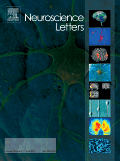
NEUROSCIENCE LETTERS
Advancing Insights into Nervous System Complexities.NEUROSCIENCE LETTERS is a distinguished journal published by ELSEVIER IRELAND LTD, focusing on disseminating impactful research across the field of neuroscience. With its ISSN 0304-3940 and E-ISSN 1872-7972, the journal serves as a vital platform for researchers, professionals, and students aiming to explore the complexities of nervous system function and related disorders. Since its inception in 1975, NEUROSCIENCE LETTERS has contributed significantly to the field, currently positioned in the Q3 category for Miscellaneous Neuroscience, with a respectable Scopus rank of 52/113, placing it in the 54th percentile among its peers. The journal is published in Ireland and offers a comprehensive repository of scientific insights, methodologies, and innovative findings that advance our understanding of neurological phenomena. While not an open-access journal, it remains an essential resource for the latest advances in neuroscience research and the academic community’s collective knowledge.

Journal of Neurological Surgery Part A-Central European Neurosurgery
Exploring the frontiers of neurological surgery.The Journal of Neurological Surgery Part A – Central European Neurosurgery is a prominent peer-reviewed publication dedicated to advancing the field of neurosurgery and its related disciplines. Published by THIEME MEDICAL PUBL INC and based in Germany, this journal has been a platform for critical advancements in clinical neurology and surgery since its inception in 2012, and it is set to continue through 2024. With a current impact factor reflecting its influence in the medical community, the journal ranks in the Q3 quartile across the categories of Medicine (miscellaneous), Neurology (clinical), and Surgery for 2023, ensuring a robust participation from the academic and medical professionals alike. It is indexed in Scopus, highlighting its global recognition, with rankings of #248/551 and #257/400 in the fields of Medicine & Surgery and Neurology, respectively. The journal features a range of open access options, thereby facilitating unrestricted dissemination of high-quality research to a wide audience. As a valuable resource, it aims to promote the exchange of innovative ideas and research findings that can contribute to clinical practice and improve patient outcomes in neurosurgery.

NeuroSci
Pioneering Discoveries in Cognitive and Neurobiological StudiesNeuroSci is an esteemed open-access journal published by MDPI, dedicated to advancing the field of neuroscience through high-quality research dissemination. Operating under the E-ISSN 2673-4087, this journal aims to foster collaboration and innovation by providing a platform for original research articles, reviews, and theoretical studies that address the complexities of the brain and nervous system. NeuroSci encourages submissions from a wide array of disciplines including cognitive neuroscience, neurobiology, neurophysiology, and neuropsychology, making it an essential resource for researchers, professionals, and students alike. With its commitment to open accessibility, NeuroSci ensures that groundbreaking findings are readily available to the global community, thereby enhancing the impact and exchange of knowledge in neuroscience. The journal is located at ST ALBAN-ANLAGE 66, CH-4052 BASEL, SWITZERLAND, contributing to the reputation of MDPI as a leading publisher in the academic landscape.
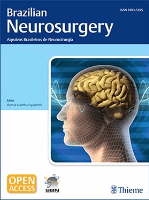
Brazilian Neurosurgery-Arquivos Brasileiros de Neurocirurgia
Pioneering Open Access in NeurosurgeryBrazilian Neurosurgery-Arquivos Brasileiros de Neurocirurgia, published by GEORG THIEME VERLAG KG, is a distinguished peer-reviewed open access journal that has been making significant contributions to the field of neurosurgery since its transition to open access in 2015. This Brazilian journal, which is accessible to a global audience, aims to disseminate high-quality research articles, reviews, and case reports that enhance the understanding and practice of neurosurgery and clinical neurology. Despite its current ranking in the Q4 category for both neurology and surgery in 2023, the journal is committed to improving its impact and accessibility for researchers, medical professionals, and students worldwide. As an important platform for innovative ideas and discussions, it takes pride in publishing scientifically rigorous content that informs and shapes the future of neurosurgical practices. With the rise of open access publishing, Brazilian Neurosurgery aligns itself with contemporary trends, making vital research readily available to its diverse readership while nurturing academic collaborations within the neurosurgical community.
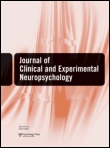
JOURNAL OF CLINICAL AND EXPERIMENTAL NEUROPSYCHOLOGY
Connecting empirical research with clinical application.The Journal of Clinical and Experimental Neuropsychology, published by Taylor & Francis Inc, stands as a pivotal resource in the realms of clinical psychology and neuropsychology. With an ISSN of 1380-3395 and an E-ISSN of 1744-411X, this journal has been a hallmark of scholarly excellence since its inception in 1985, continuing to shape the fields until 2024. It is renowned for its rigorous peer-reviewed articles and has garnered significant recognition, achieving a Q2 ranking in Clinical Psychology and Q3 rankings in various other relevant categories as of 2023. Serving as a bridge between clinical practice and experimental research, the journal underscores the critical role of neuropsychological assessment and intervention in enhancing mental health outcomes. Although not an open-access journal, it provides significant insights and empirical data that are crucial for researchers, clinicians, and students dedicated to advancing the understanding of cognitive functioning and psychological health. The journal's commitment to disseminating high-quality research contributes to its reputation and impact, making it a vital resource for those engaged in the study of neuropsychology and its clinical applications.
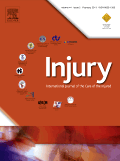
INJURY-INTERNATIONAL JOURNAL OF THE CARE OF THE INJURED
Elevating Standards in Injury ManagementINJURY - INTERNATIONAL JOURNAL OF THE CARE OF THE INJURED, published by Elsevier Science Ltd, is a pivotal resource in the field of injury management, bridging the gap across Emergency Medicine, Orthopedics, and Surgery. With a legacy dating back to 1969, this esteemed journal is recognized for its high impact, holding a Q1 ranking in Emergency Medicine and Surgery, and a Q2 ranking in Orthopedics and Sports Medicine as of 2023. It is ranked 26th out of 109 in Emergency Medicine by Scopus, placing it in the 76th percentile, which underscores its authority and influence within the medical community. The journal's objective is to disseminate vital research findings and clinical practices that enhance the care of injured patients, making it an essential reading for researchers, clinicians, and students alike. With ongoing contributions until 2024, INJURY continuously evolves with the field, ensuring that it remains at the forefront of advancements in injury care and rehabilitation.